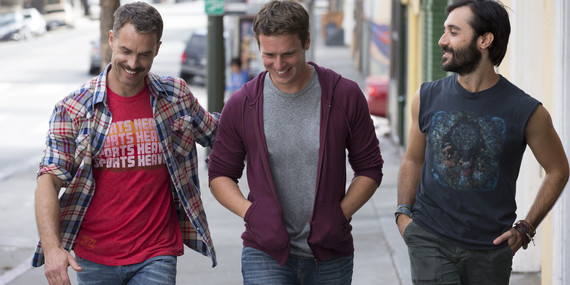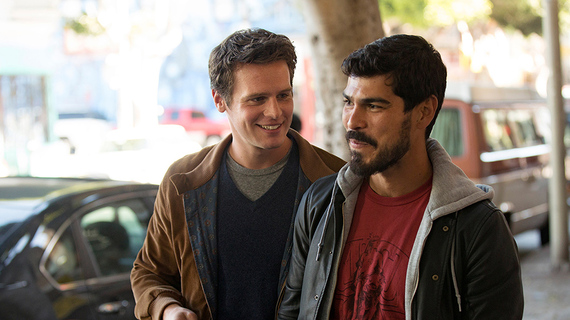Hearing and Understanding Each Other: LGBT Outreach Event at CFM
www.christsforgiveness.com.
www.youtube.com/watch?v=eWppGCWejps&feature=youtube_gdata
Daily Archives: March 29, 2015
Is This Photo Proof Mike Pence Knew RFRA Discriminates Against LGBTs?
Is This Photo Proof Mike Pence Knew RFRA Discriminates Against LGBTs?
A closer look at who attended a private signing ceremony finds some cheerleaders for discrimination.
Lucas Grindley
www.advocate.com/politics/2015/03/29/photo-proof-mike-pence-knew-rfra-discriminates-against-lgbts
16 Shocking Allegations In Scientology Documentary 'Going Clear'
16 Shocking Allegations In Scientology Documentary 'Going Clear'
The Church of Scientology has long been a controversial institution among both the religious community and entertainment business. But the latest documentary from Oscar-winning director Alex Gibney, “Going Clear: Scientology and the Prison of Belief,” explores the secrets of the organization through interviews with former high-ranking officials and former members in a way never seen before.
Based on the 2013 book of the same name by Lawrence Wright, “Going Clear” not only exposes details about Scientology but also serves as an in-depth explainer for those unfamiliar with the group. The Church has spoken out against the film (read their full statement here) as have its celebrity members. But whether you’ve studied Scientology closely or merely know it as “the religion with Tom Cruise,” watching “Going Clear” is a powerful, stunning and emotionally overwhelming experience that will likely leave you with your mouth agape. Here are the most shocking allegations put forth in “Going Clear,” which made its HBO debut on Sunday night:
1. L. Ron Hubbard’s Scientology creation story
When Scientologists reach level OT III, they are shown the “secret materials,” as director and former member Paul Haggis described them: Hubbard’s hand-written account of the creation myth. According to this, 75 million years ago a galactic dictator named Xenu froze people and dropped their bodies into volcanoes. From there, the disembodied spirits, or thetans, apparently jumped into newborns bodies. According to Hubbard, these multiple thetans crowded in our bodies are the source of our anxieties and fears.
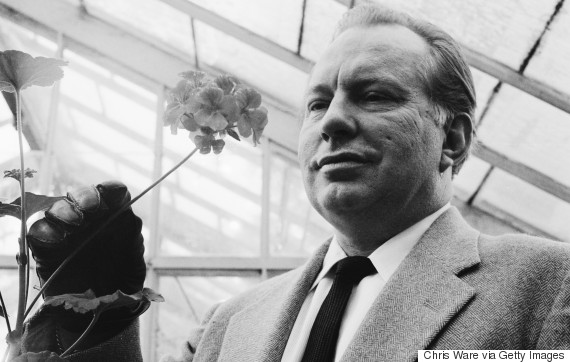
2. Hubbard spent time in a black magic cult
Before founding Scientology, Hubbard befriended rocket and chemical engineer Jack Parsons who was a part of black magic cult Ordo Templi Orientis (OTO), which followed the teachings of Aleister Crowley. According to “Going Clear,” Hubbard became Parsons scribe and assistant on a magical operation to impregnate a goddess-like woman to create the anti-Christ.
3. Members were allegedly thrown overboard as punishment
Hubbard created Ethics, or punishments for his auditors who made mistakes during sessions. They were then pushed overboard on his ships into the water, which was “30 feet, 35 feet” below, according to Hana Whitfield, one of the original Sea Org members.
4. Hubbard told his second wife he murdered their daughter
When Sara Northup, Hubbard’s second wife, threatened to leave him unless he got psychiatric help, he reportedly kidnapped their daughter Alexis. According to written accounts from Northup, Hubbard told her he “cut [Alexis] into little pieces” and dropped her in a river. Then he would call back and tell Sara that their daughter was alive.
5. There was a Scientology “prison camp”
Former Church member Sylvia “Spanky” Taylor, who was once the liaison between the Church and John Travolta, was sent to the Rehabilitation Project Force (RPF), or what she described as the “prison camp where you’d go for re-indoctrination.” According to the film, when sent to the RPF, people would have to do hard labor for “30 hours on, 3 hours off,” eat table scraps and sleep on dirty, wet mattresses.

6. The FBI raid on the Church was the biggest in history at the time
On July 8, 1977, the FBI raided Scientology’s Los Angeles, Hollywood and Washington, D.C. locations, which at the time was the bureau’s biggest raid ever.
7. The Church stole government documents
According to the film, in the ’70s, many Scientologists were directed to get jobs in Department of Justice and IRS offices in order to steal documents against or relating to the Church.
8. The Church apparently has a blackmail folder on John Travolta
According to Wright in the film, when there were rumors of Travolta wanting to leave Scientology, the Church created a “black PR package” that has “all the damaging material” from his private auditing sessions. Travolta also reportedly refused to have his sessions video taped, but secret cameras were hidden anyway.
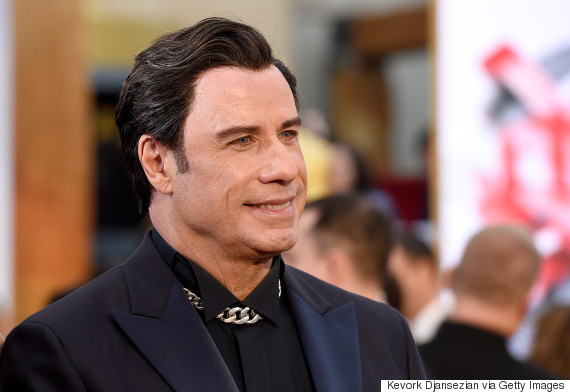
9. The Church investigated the IRS
One of the Church’s goals was to be recognized by the IRS as a fully tax-exempt religion, according to former senior executive of the Church Mark “Marty” Rathbun. Thousands of Scientologists reportedly filed 2,400 total lawsuits against IRS employees, and private investigators were sent to IRS conventions to obtain information. According to journalist Tony Ortega, Scientology leader David Miscavige told the IRS commissioner that the lawsuits would go away if the Church was given tax-exempt status. The Church was granted exemption in October 1993.
10. Tom Cruise and the Church allegedly wire-tapped Nicole Kidman’s phone
According to the film, the Church noticed Tom Cruise slipping away from Scientology during his marriage to Nicole Kidman. Cruise reportedly said he wanted to have Kidman’s phone wiretapped, which the Church did at his request.
11. Cruise may have had employees pimp his cars for 40 cents an hour
Sea Org members make 40 cents an hour, according to Ortega, who says, “I don’t think there’s any way Tom Cruise is not aware of that.” According to the film, they have “tricked out his cars and motorcycles” and hanger in Santa Monica, California, and installed the audiovisual equipment at his home.
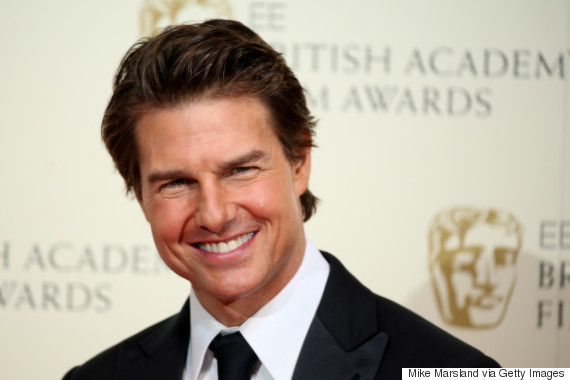
12. The Church supposedly found Cruise a new girlfriend
According to Wright, Cruise was “overheard to complain that he needed a new girlfriend” when he was in Spain at the opening of a new Scientology center. The Church then found a young Scientologist, Nazanin Boniadi, and reportedly had her braces removed, bought her $20,000 of clothes and colored her hair “to Cruise’s liking.” She was then told she would be Cruise’ girlfriend, but the relationship soon ended. Boniadi apparently signed a non-disclosure agreement with the Church and has since become a well-known actress in “Homeland,” “Iron Man,” among other films and shows.
13. Paul Haggis left because of the the Church’s homophobic stance
Oscar-winning filmmaker Paul Haggis (“Crash,” “Casino Royale”) left Scientology in 2009 after 30 years when his two gay daughters told him how they were being treated and harassed by the Church. According to Church doctrines, the religion views homosexuality as a disease. Haggis then wrote a now-famous letter of his resignation from the Church.
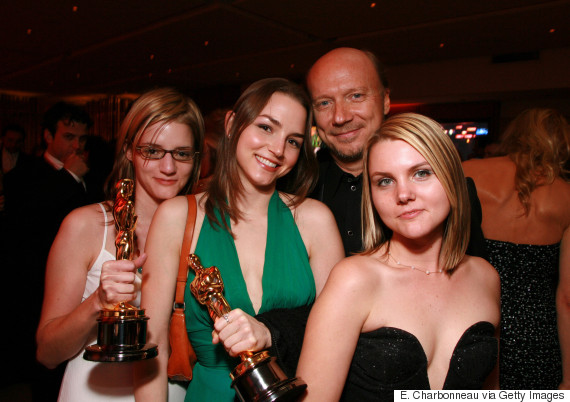
14. Scientology’s book value is about $1.5 billion
Ortega obtained recent tax records that revealed the main three tiers of the Church (which is a non-profit organization) have a combined book value of $1.5 billion.
15. Sea Org members were allegedly tortured to the sounds of Queen’s “Bohemian Rhapsody”
In 2004, Miscaviage apparently ordered the top members of the Sea Org to live in what was known as The Hole in the Chuch’s secret Gold Base in California. In the film, former members say they were told to confess their crimes against the Church in order to leave The Hole. Beyond beatings and one man being ordered to “mop up the bathroom floor with his tongue,” another method of abuse was when members were forced to play musical chairs to “Bohemian Rhapsody.” Those participating were “fighting to stay” in the Church: whoever didn’t have a seat when the music stopped was expelled from the Church.
16. If members leave the Church their friends & family are forced to “disconnect”
The biggest reason to not leave the Church for many Scientologists is fear of “disconnection.” This is when all friends and family members still with the Church are told to cut ties with those who leave, or those deemed Potential Trouble Sources (PTS), or Suppressive Persons (SPs). Many former members included in the film haven’t seen or spoken to their family or friends since they left.
“Going Clear: Scientology and the Prison of Belief” airs again on Monday, March 30 at 9:00 p.m. ET on HBO.
Apple CEO Pens Op-Ed Calling on Corporations to Oppose Surge of Indiana-Like Bills Across Country
Apple CEO Pens Op-Ed Calling on Corporations to Oppose Surge of Indiana-Like Bills Across Country

“A wave of legislation, introduced in more than two dozen states, would allow people to discriminate against their neighbors,” Cook writes in the Washington Post
HRC.org
Repère 3 LGBT
Letting Go of 'Looking'
Letting Go of 'Looking'
Dom, Doris and Patrick aren’t the only ones feeling funereal
The first Sunday night without HBO’s “Looking” is upon us. Of course there would have been no “Looking” tonight, even had the show been renewed, since the second much improved season has just wrapped. One of the funniest things I heard after the cancellation was this:
The good news is Looking thinkpieces are also canceled.
— Connor Goldsmith (@dreamoforgonon) March 25, 2015
Well, yes. They’re almost at an end, too. The autopsy reports have to run their course and so does the mourning process. And if HBO makes good on its promise of a wrap-up movie (believe it when you see it), the cycle starts all over again in miniature even if the end point is still goodbye. Given all this finality, it’s strangely apt that the second season’s finest episode “Looking for a Plot” took places at a funeral (Doris’s father) and sent Dom, Doris and Patrick spinning emotionally, even if they didn’t quite realize it at first.
But the mourning is real. At least for those of us who loved the show for what it actually was.
MORE AFTER THE JUMP…
Right from the start “Looking” had been the target of weird vitriol from some members of the LGBT community, some of it easy to understand (internalized homophobia) some more complicated but no less true (it was not a TV show for those who love, say, plot) but some of the negative reactions were far more peculiar and contradictory in nature. It became very obvious, especially in its second season, that Looking was one of those shows that people had trouble seeing as it was rather than how they wanted it to be or what they believed it was. Which was…what exactly? It was never clear what the people who disdained it wanted it to be and one suspects this varied considerably from person to person and was inconsistent from week to week.
It was sex-negative, it was too obsessed with sex, there was not enough sex. We’ve heard it all. But how could all of these things be true? What’s more the show’s sex scenes actually affected the characters emotionally and narratively. It wasn’t just empty soft core titillation like [shudder] “Queer as Folk”.
The major clue that “Looking” was never treated fairly critically was the frequent vicious attacks on its (perceived) lack of diversity. This for a show that subtly gave a side-eye to men whose social circle was not diverse and the way it endorsed suspicion of gay couples who looked too much alike (consider that great takedown of Patrick & Kevin by the disabled gamer in “Looking for Glory“), the way it was clear through the entire arc of the second season but especially in its final complex and richly directed episode “Looking for Home” that Kevin pulling Patrick away from his far more diverse world of San Francisco into a much smaller interior world of all white, all wealthy, all hot sculpted men of roughly the same age was not healthy for him.
The diversity topic was always a sore spot in the media for reasons that didn’t actually have much to do with the content of the show itself. Sure the majority of the characters were white (as they are on most shows on television) but within its two seasons the show also featured in recurring or prominent roles: a straight woman, two Hispanic gay men, a black straight man, a black gay man, an Asian straight man, and we have every reason to believe that the third season would have expanded the cast further still since the central characters lives were also expanding as their initially tight circle was opening up (albeit not Patrick’s whose life was shrinking) probably to include trans characters since Agustin was now working with them. We were beginning to meet the leads’ families and new characters all the time. Just about the only glaring omission from the show was no lesbian characters but then lesbian and gay social circles don’t always overlap as much as they should post-college.
But the truly devastating thing about Looking‘s loss was the rare topics it explored that are otherwise almost entirely absent from television. There’s more to diversity than skin color and the series presented all kinds of usually invisible relationships and topics, romantic and otherwise, with something like true purpose. Think about it: It paired people of different socioeconomic backgrounds, different generations, different races, different body types and even different HIV statuses and often commented, sometimes very subtly but sometimes in more on-the-nose dialogue, the ways in which these differences mattered… and/or didn’t.
Where else can you find any of that on television?
In truth, I can’t even wrap my head around the complaints about its lack of diversity. Unless of course the people complaining were a) not actually watching the show b) watched it a couple of times only and didn’t emotionally process it or c) watched it or didn’t watch it but either way preferred to be outraged or annoyed rather than engaged in the more complicated process of thinking about what the show was conveying.
It’s okay not to like any show or movie or play or book or whatever. Aesthetic taste is personal and should be. But it’s important to know why you don’t like something and to make sure that that thing you don’t like actually jives with what it is outside of your own head.
I loved reading what Adam Barin wrote about this show recently as shared on Boy Culture and co-sign many of the points including these:
There’s literally no pleasing all gay people as a monolithic bloc. Working at Outfest and NewFest for three years taught me that. Some people will look at a wonderful gay movie that has sex in it and hate that there’s sex. Some people will lament that there’s a sissy character. Some people will say there’s not enough sex. Some people will watch the worst piece of shit and say it’s wonderful because there are shirtless guys or topless gals in it. Most people don’t want to see anything that’s challenging…
And so when Looking was cancelled today, and I started seeing reactions on my feed like, “Good!” “At last” I felt sick, and I felt like I finally understood what my subtly homophobic screenwriting teacher at NYU meant when she told me that if I wrote about gay people it would be “limiting” – a note I have spent years proudly ignoring. It’s not that I didn’t have my own feelings about Looking’s strengths and weaknesses. I would have loved to have written for it, but I wasn’t hired. Still, I watched. And I think it really is the ghost of the generations of homophobia that forced our own stories to be squashed, hidden, and coded or put unwholesome characters in our films that caused us to react the way we reacted to Looking. Better no representation than imperfect representation!
Instead of protesting a blatantly homophobic film like GET HARD, we are cheering the demise of a piece of film by a great gay filmmaker which starred all openly gay actors giving moving and powerful performances. Nowadays we criticize every single bit of representation or lack thereof and shun the films and media by not watching. I’m not saying those conversations were wrong, and shouldn’t have happened, but the failure of Looking to make it past two seasons is a bad thing for gay filmmakers, and a bad thing for people trying to put gay characters on the small screen.
It’s terribly sad because it’s true.
As for fans of the show, we’ll have to let it go now.
I’ll miss Doris, Dom, and Patrick a lot. I’ll miss Richie sometimes too in the way I already missed Frank and Lynn (the other chief ex-boyfriends of the show, a blue collar hispanic guy, an older white guy, a black guy – how is this show not diverse again?). I’ll mourn not getting to know the side players a little better like Doris’ new man Malik, HIV positive bear Eddie, the crusading ginger dating Richie, Patrick’s favorite co-worker Owen (who hadn’t taken well to the Kevin situation), to Patrick’s imploding family. Hell, I’ll even miss Agustín and Kevin a little though they sure were maddening at times.
So a final thank you to Michael Lannan (series creator) and Andrew Haigh (the principle director, who we already owed so much for the exquisite film Weekend). Thanks for making a beautiful series, with its own unique voice, that was getting better all the time. We’ll say goodbye with this tweet from the fine filmmaker Zal Batmanglij (The East, Sound of My Voice) who incisively described this sad moment in LGBT television and our collective loss…
Looking was a colt. Shedding its youth, about to emerge a stallion. That last ep was like the gears of an emotional watch clickin into place
— Zal Batmanglij (@z_al) March 25, 2015
Nathaniel Rogers would live in the movie theater but for the poor internet reception. He blogs daily at the Film Experience. Follow him on Twitter @nathanielr.
Nathaniel_R
Butler University President Says Lawmakers Damaged Indiana
Butler University President Says Lawmakers Damaged Indiana
Would you feel welcome at Indiana colleges and universities?
Lucas Grindley
www.advocate.com/politics/2015/03/29/butler-university-president-says-lawmakers-damaged-indiana
'Looking' for More
Last week, HBO announced that its gay drama Looking would not be renewed for a third season, ending the brief run of this show about three gay friends in San Francisco. I have to confess, the announcement made me a bit sad. Yes, I’m a fan of Looking. But, apparently, I’m a rare breed. The show’s ratings had dropped considerably. And when the news broke, my Facebook feed was filled with comments that amounted to “good riddance.”
I get it. The show was FAR from perfect. The dialogue was sometimes trite. Its central character, Patrick, was often annoying, his choices bizarre. It presented a narrow view of San Francisco, and focused on a small group of very white, very privileged gay men. All of these critiques are valid. And probably account for the low ratings of this second season.
But the nature of the commentary surrounding the end of this little drama I found quite perturbing. On my newsfeed, in my office, on Twitter, the internet all over, seemed to both deride the show and relish in its demise. Indeed, the commentary felt like the acidic bite from that bitchy queen we all know. It was the feeling of walking into that party where you don’t know anyone and you’re the only one without a six pack.
Worst of all, these kinds of comments all came from gay men.
I liked the show because it finally presented a world I could relate to. It was refreshing to see a show that dealt with the issues that concern me and my community: being gay in America, dealing with questions of monogamy and infidelity, Grindr, Truvada, drugs, orgies, cruising. I personally have never seen any of these issues engaged with in any meaningful way in the mainstream media.
Instead, I’ve only seen stereotypical and basic portrayals of gay men. I couldn’t relate to either Jack’s over-the-top camp or Will’s apparent asexuality on Will & Grace. The gay couple on Modern Family just make me cringe. And the sex-fueled, party boys of Queer As Folk were most definitely stuck in the nineties.
But with Looking, at last there was an attempt to create interesting, three dimensional characters, who had real desires, struggles and dreams. Here was a show that was beautifully shot, with an amazing soundtrack. With great performances from its cast. Here, I thought, finally is a show I can enjoy and relate to.
I admit that part of the reason I relate to the show is because I am, indeed, a privileged white gay man. And the show was definitely lacking in diversity. But to be honest, so is the mainstream gay community. When I go to Fire Island in the summer, I feel like I’m the closest thing on the whole island to a person of color (I’m half Mexican). How many Grindr profiles come up with “no black guys,” or “not into Asians”? The show was, in that sense, accurate, if deeply problematic. But at least it made us think about it. At least Looking was provoking a much needed conversation.
Perhaps the kind of bitching that surrounded the show comes from the fact that as a community, we’re not ready to take ourselves seriously. We’re not ready to confront the issue of racism in the gay community. We are afraid to confront the realities of crushed dreams and failed relationships. To consider the possibility of both true love and heartbreak. It’s much easier to watch RuPaul because we don’t need to invest in it. We don’t have to confront ourselves — instead, we wear masks. Beautiful, sequined, rainbow masks. Because for hundreds of years we’ve been told we’re not good enough. And now that there is a show that treats us like real people, we just can’t handle it.
Most of all, what the end of the show says to me is that America is not ready for a show with real gay characters. If the only people who were going to watch this show were a couple of gay guys, the show was always going to fail. And in an America where states are right now passing laws that make discrimination against LGBT folks legal, it makes sense that the audience for this show would be tiny. In an America where gay marriage has been the source of such debate and outrage, it makes sense. In an America where Ted Cruz could actually be elected president, it makes sense. Where trans women of color are murdered on a weekly basis, it makes sense.
I don’t believe that as a community we should become complacent and not critical of our representations in the media. As Ingrid Jungermann says, “We should be harder on each other. Who better to be critical than someone who understands where you’re coming from? Some queer art is just plain bad and I think a lot of us are frustrated by that.”
We need to hold ourselves to the highest standard. We need to examine issues like racism and transphobia and critique art that fails to do so. But nor should we bitch about art that is at least trying to take us seriously. Or relish so gleefully in its demise. Otherwise, all we’ll be left with is Cam and Mitch from Modern Family.
I hope that the Andrew Haigh’s of this world don’t take the critiques to heart. That they continue to make interesting, moving and insightful portrayals of LGBT people. To push the envelope, provoke debate and make us think about who we are. That above all, show the world that lesbian, bi, gay and trans people are real, beautiful, different, wonderful people. God knows we need it.
Angie's List Pulls $40 Million Indiana Campus Expansion Proposal Over Discriminatory 'Religious Freedom' Law
Angie's List Pulls $40 Million Indiana Campus Expansion Proposal Over Discriminatory 'Religious Freedom' Law
Indianapolis-based Angie’s List has announced it is canceling a $40 million headquarters expansion due to the state’s new law allowing discrimination based on religious grounds, the Indianapolis Star reports:
The decision is a direct result of passage of the Religious Freedom Restoration Act, co-founder and chief executive officer Bill Oesterle said Saturday.
The proposed expansion of the online consumer ratings service was touted to add 1,000 good-paying jobs over five years and help revitalize a struggling Eastside neighborhood.
“Angie’s List is open to all and discriminates against none,” Oesterle said, “and we are hugely disappointed in what this bill represents.”
The paper notes that Oesterle is a Republican who supported Pence in the race for governor, but that Oesterle has made it clear this new law “hurts the company’s ability to recruit and retain top-flight talent.”
Yesterday was a very dark day for Indiana. But, for me it was also a turning point. I intend to do something about it. #RFRA #myindiana
— Bill Oesterle (@billo317) March 27, 2015
Previously, “Indiana Gov. Mike Pence Attempts Damage Control, Won’t Say If ‘Religious Freedom’ Bill Will Lead To Discrimination” [tlrd]
Kyler Geoffroy
Stephanopoulos Corners Pence over LGBT Discrimination: ‘It’s a Yes or No Question!’
Stephanopoulos Corners Pence over LGBT Discrimination: ‘It’s a Yes or No Question!’
Stephanopoulos Corners Pence over LGBT Discrimination: ‘It’s a Yes or No Question!’ – March 29th, 2015 -ABC News This Week host George Stephanopoulos absolutely grilled Indiana Governor…
www.youtube.com/watch?v=AIH0Sk0xoXo&feature=youtube_gdata

